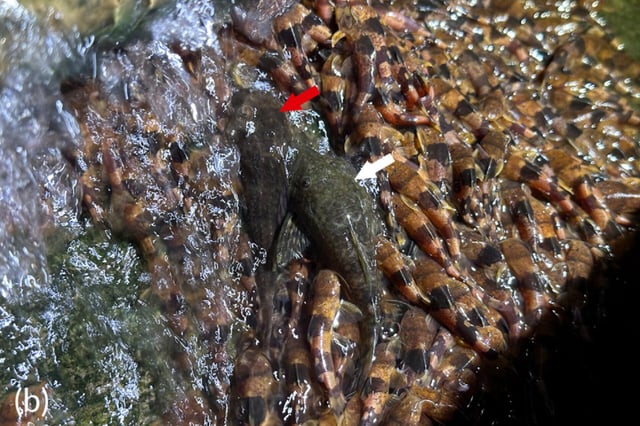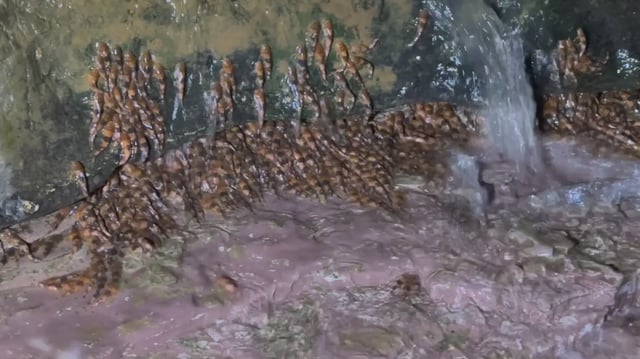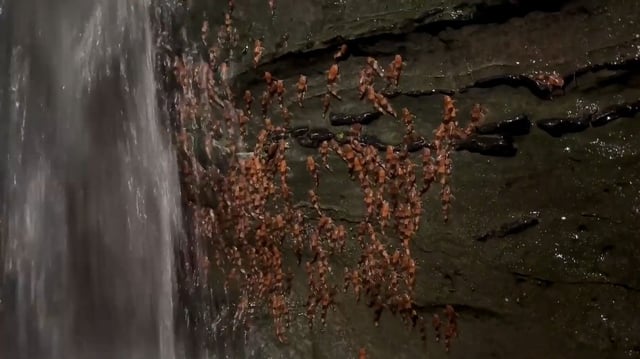Overview
- The peer-reviewed paper, published August 8 in the Journal of Fish Biology, confirms coordinated climbing in Rhyacoglanis paranensis.
- Scientists observed the behavior for about 20 hours after a November 2024 alert in Mato Grosso do Sul’s Paraguay River basin.
- Movements began around 6 p.m., with thousands aggregating on flatter rocks and smaller groups scaling near-vertical surfaces.
- Climbing techniques included stacking on horizontal faces, fins splayed to create suction-like contact, and even upside-down slithering on crevices and artificial objects.
- Three other species were recorded climbing for the first time, with Characidium cf. zebra active by day and Ancistrus sp. and Hypostomus khimaera active at night.


